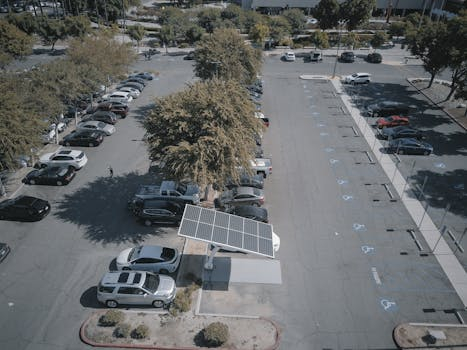Ten Innovations That Changed Cars Forever
For over a century, cars have been a staple of modern-day transportation. From the early days of the Model T to the sleek, high-tech vehicles of today, cars have constantly evolved to fit the needs and desires of society. However, there are certain innovations that have had a lasting impact on the automotive industry, changing cars forever. In this article, we will explore ten of these innovations that have shaped the cars we know and love today. Whether you’re a car enthusiast or simply interested in the history of transportation, these ten innovations are sure to fascinate and inspire.
1. The Invention of the Internal Combustion Engine
The invention of the internal combustion engine in the late 1800s fueled the creation of the first cars. This engine, which converts gasoline into kinetic energy, was a major breakthrough in the automotive industry. It allowed cars to be more powerful and efficient, paving the way for the development of faster and more practical cars.
2. The Introduction of the Electric Starter
Prior to the invention of the electric starter in 1912, early cars had to be started by cranking a handle. This was not only physically demanding, but also dangerous as the crank could kick back and injure the operator. The electric starter, created by Charles Kettering, made starting a car as simple as turning a key. This innovation helped popularize cars, making them more accessible to the general public.
3. The Implementation of Mass Production
Before Henry Ford introduced the assembly line in 1913, cars were primarily hand-crafted, making them expensive and often unattainable for the average person. Ford’s innovation of mass production drastically reduced the time and cost of producing a car. This allowed for a more affordable and efficient manufacturing process, making cars more accessible to the masses.
4. The Arrival of the Automatic Transmission
The invention of the automatic transmission in 1921 by Alfred Horner Munro revolutionized the driving experience. Prior to this, cars were equipped with manual transmissions, which required drivers to constantly shift gears while driving. With the automatic transmission, drivers could simply press the gas pedal and go. This made driving easier and more enjoyable for the average person.
5. The Introduction of Safety Features
In the early days of cars, safety features were virtually non-existent. However, in the 1950s, manufacturers began implementing safety innovations such as seat belts, padded dashboards, and improved braking systems. These features helped reduce the number of injuries and fatalities in car accidents, making for a safer driving experience.
6. The Development of Fuel Injection
Prior to the 1980s, cars primarily used carburetors to mix fuel and air for the engine. However, fuel injection systems were developed to improve fuel efficiency and reduce emissions. This innovation has continued to evolve, with electronic fuel injection becoming the standard in modern cars. Fuel injection has not only increased efficiency, but also improved performance and reduced pollution.
7. The Adoption of Computer Technology
In the 1980s, cars began incorporating computer technology for functions such as engine control, diagnostics, and navigation systems. This allowed for more precise control and real-time monitoring of a car’s performance. Today, cars are essentially computers on wheels, with advanced features such as self-parking and autonomous driving.
8. The Introduction of Hybrid and Electric Cars
In response to growing concerns about pollution and climate change, the hybrid car was introduced in the late 1990s. Combining both gasoline and electric power, the hybrid significantly reduces fuel consumption and emissions. More recently, fully electric cars have become increasingly popular, providing a greener and more sustainable form of transportation.
9. The Integration of Advanced Safety Features
In recent years, car manufacturers have been implementing advanced safety features such as lane departure warning, automatic emergency braking, and adaptive cruise control. These features use sensors and cameras to assist drivers and help prevent accidents. With the emergence of driverless cars, safety innovations are continuously evolving to make transportation safer and more efficient.
10. The Development of Autonomous Vehicles
The idea of a self-driving car has long been a dream of science fiction, but with advancements in technology, it is now becoming a reality. Companies such as Tesla and Google have been testing autonomous vehicles on public roads, with the potential to revolutionize the way we think about transportation. With fully autonomous cars on the horizon, the possibilities for the future of transportation are endless.
In conclusion, cars have come a long way since the days of the Model T. The ten innovations mentioned in this article have forever changed the way we view and utilize cars. As technology continues to advance, it will be exciting to see what new innovations will shape the future of the automotive industry.










